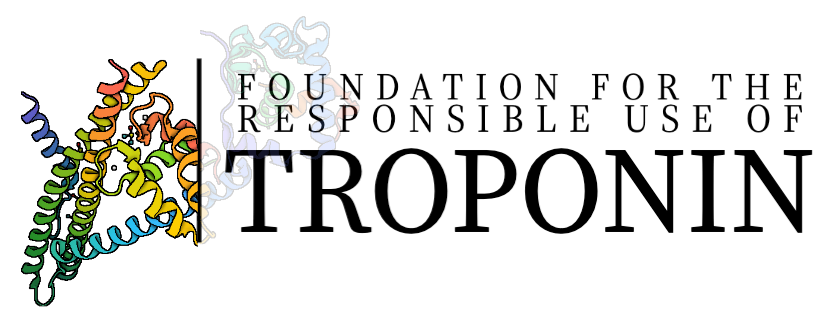During myocardial ischemia, cardiac troponins become detectable in the venous circulation after several hours following clearing of interstitial fluid from the infarct zone via the lymphatic system. Cardiomyocyte necrosis causes release of troponin complexes in various combinations (e.g. free cTnI, cTnI+cTnC, cTnI+cTnC+cTnT, or free cTnT). Biphasic serum concentrations of troponin after ischemia results from rapid release of a small cytosolic (“early-release”) pool of free cTn, followed by slower release of cTn that is tightly bound to the myofibril (“structural pool”). Elaboration and activation of proteases in ischemic cardiomyocytes and serum cause degradation of troponins after ischemia, so commercial immunoassays target the most stable regions of cTn (such as the central region of cTnI that binds TnC). Finally, the biphasic release profile of cTnT is caused by reperfusion: without reperfusion, cTnT follows a monophasic release profile. Because the early-release, or cytosolic, pool of cTnI less less than that of cTnT, cTnI always follows a monophasic release profile.
Within the cardiomyocyte, troponins are primarily localized to the sarcomere, which forms the myofibrillar apparatus, with only a small fraction in the cytosol, estimated at 3.5% and 7.0% of total TnI and TnT by mass, respectively [19]. During a myocardial infarction, TnI is released as a single peak, while TnT is usually released in a biphasic manner, with the second peak occurring approximately 80 h after the onset of chest pain, regardless of reperfusion [20]. One hypothesis for this biphasic behavior is that cytosolic TnT is released immediately into the circulation following damage to myocytes, whereas myofibrillar TnT takes longer to be released [20]. However, alternative explanations such as differences in the half-life of immune-reactive TnT fragments cannot be ruled out [20]. A recent study which used advanced biochemical techniques including gel filtration revealed that following myocardial infarction (MI), much of detectable TnT is part of a ternary complex of TnI, TnT, and TnC, which progressively gets degraded to lower molecular weight species, and that a complex of TnI and TnC also exists alongside free TnT fragments [21]. However, other studies have found contrasting results with no clear consensus [22–24]. Further complicating the matter is that troponins are subject to pro-teolytic degradation after release, with matrix metalloproteinase-2 (MMP-2), calpain-1 and calpain-2 cleaving TnI, and MMP-2 and calpain-1 cleaving TnT [24,25]. Notably, knowledge of which fragments are found in the serum is useful for rationally designing antibodies against the most stable Tn epitopes, but it is possible that different Tn com-plexes are found in different disease states. A fascinating prospect suggested by pre-liminary data, which has yet to be realized, is the discovery of disease-specific Tn complex isoforms, which could enable the differentiation of the etiology of Tn elevation and lead to more specific diagnoses [26–28].
There are many mechanisms for Tn release into the serum after cardiomyocyte in-jury. The most common mechanism is myocyte necrosis, when myocytes undergo necrosis due to ischemic injury—for example, Ca2+ leaks into the cytoplasm, which causes massive contraction of all sarcomeres and subsequent consumption of all ATP, resulting in the total destruction of cell contents [29]. However, apoptosis can also be responsible for Tn release: in a porcine model of brief (10 min) coronary occlusion, which is not long enough to cause necrosis or infarction, significant amounts of TnI were released into the serum from apoptotic cells [30]. Even transient increases in left ventricular end-diastolic pressure using a model of reversible left ventricular dysfunction can cause stretch-induced myocardial stunning, apoptosis, and Tn release [31]. Finally, it is even possible to have Tn release from living cells by mechanisms including ischemia-induced membrane blebbing, a stretch-induced integrin response, cell turnover, and inflammation [32,33].
Gokhan I, Dong W, Grubman D, Mezue K, Yang D, Wang Y, Gandhi PU, Kwan JM, Hu J-R. Clinical Biochemistry of Serum Troponin. Diagnostics. 2024; 14(4):378. https://doi.org/10.3390/diagnostics14040378

